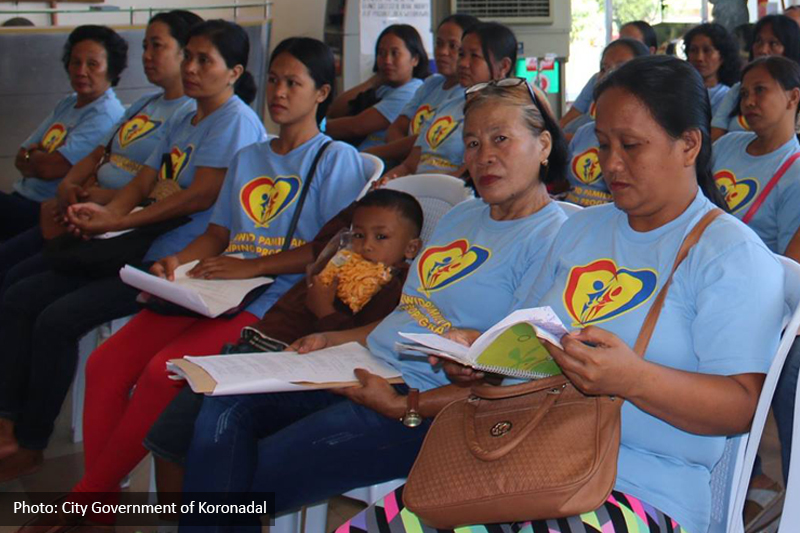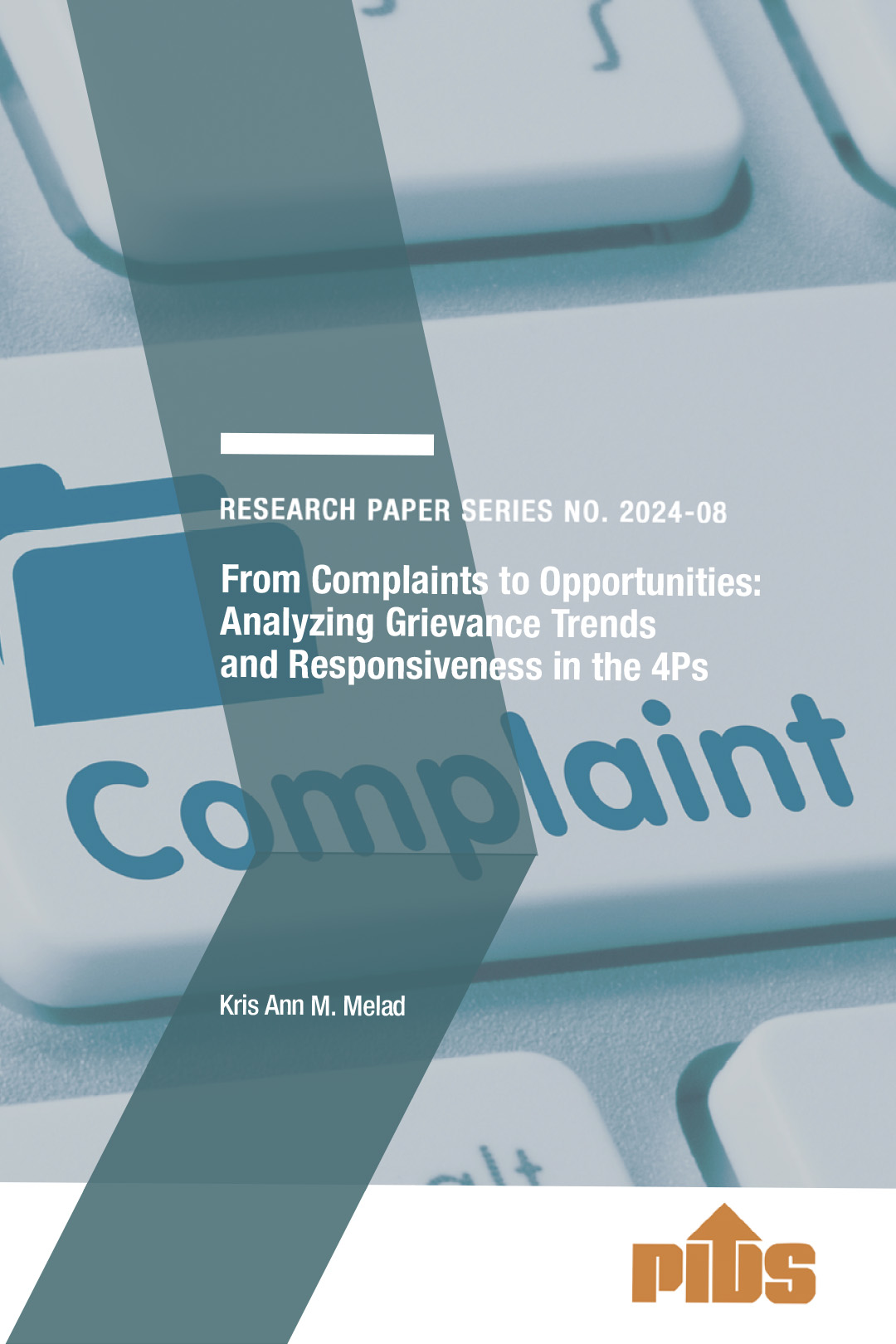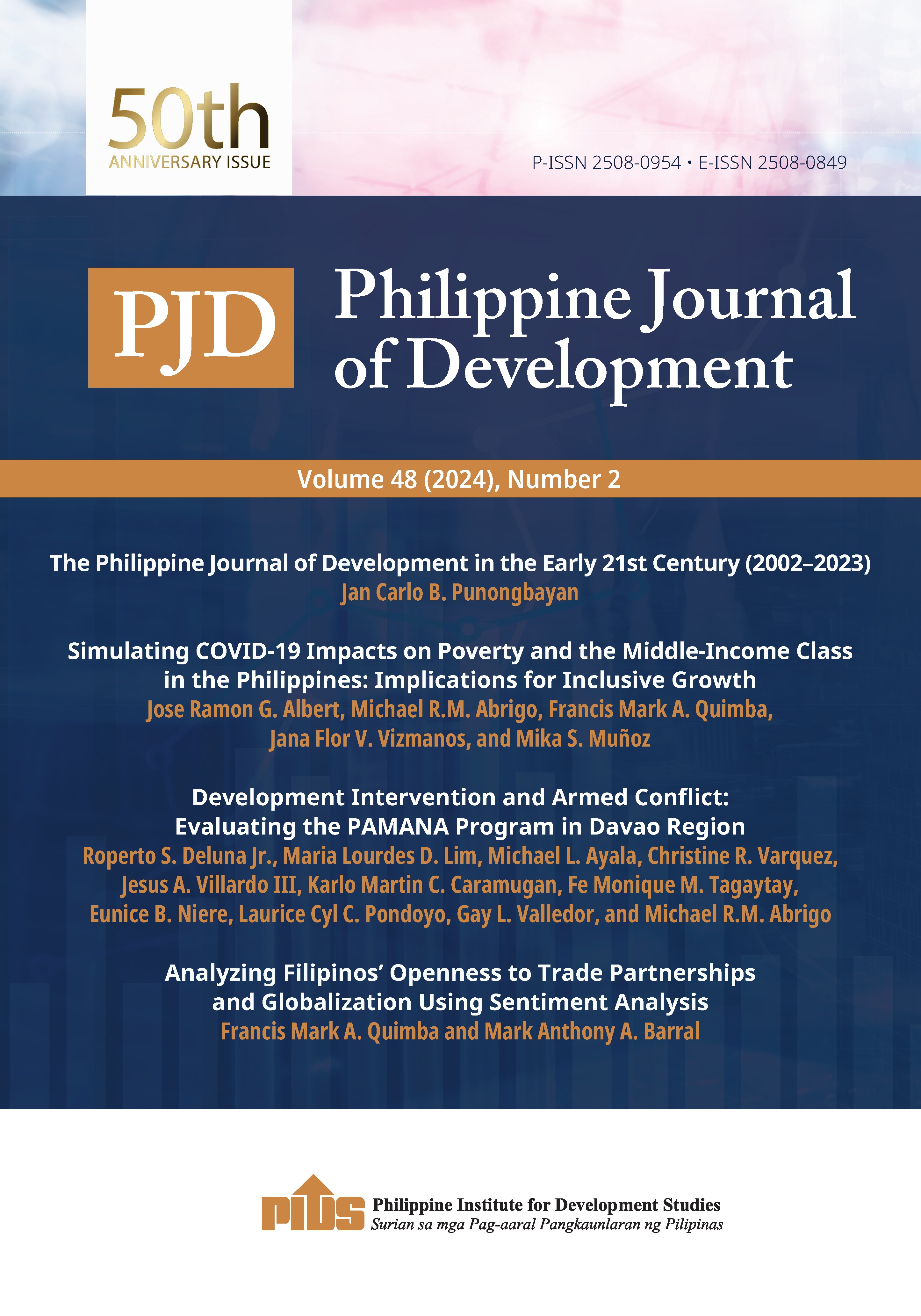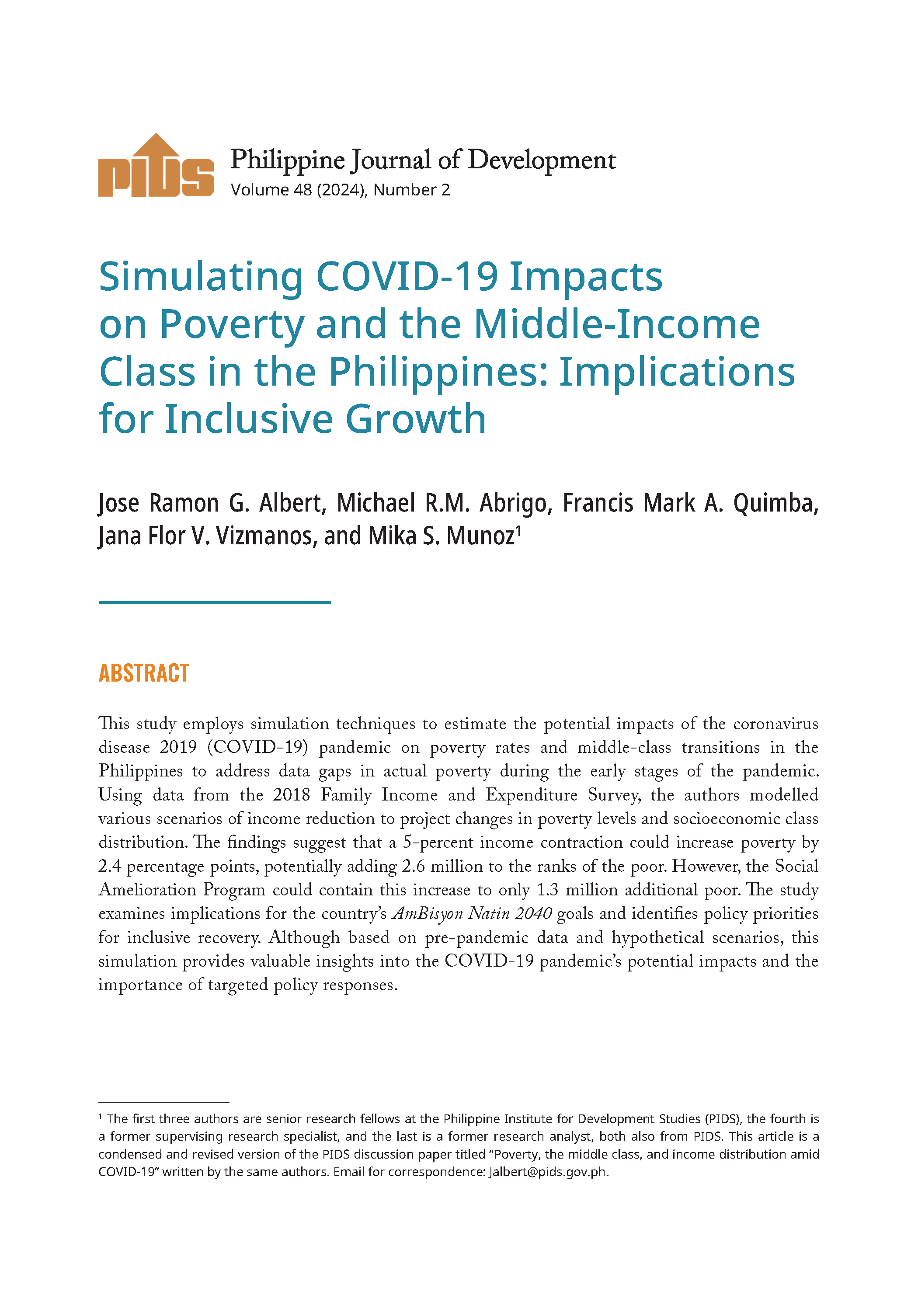
A recent impact evaluation of the Pantawid Pamilyang Pilipino Program (4Ps) conducted by state think Philippine Institute for Studies (PIDS) showed mixed results.
Senior Research Fellow Aniceto C. Orbeta Jr., Research Analyst Nina Victoria V. Araos, and Supervising Research Specialist Kris Ann M. Melad held focus group discussions with program beneficiaries and nonbeneficiaries and key informant interviews with program stakeholders.
Three impact evaluations have been done so far since the program’s inception in 2008.
In the most recent assessment, the third wave impact evaluation (IE3) revealed that the program has achieved significant gains in its target outcomes on education, health, and household welfare.
However, the evaluation also presented “unexpected as well as confounding” results, particularly on maternal health, child nutrition, and labor market outcomes.
An increase in prenatal care utilization was observed among beneficiary mothers but not for postnatal care utilization. Thus, the goal of increasing the utilization of maternal health services is only partially achieved.
There was also an increase in the prevalence of severe stunting among program beneficiaries despite positive results in previous evaluations. However, the study noted that this outcome still needs further investigation.
Although Pantawid and non-Pantawid beneficiaries are “equally likely to be members of the labor force”, the evaluation also revealed that program beneficiaries are less likely to be employed.
On maternal health, the authors noted the lack of proper understanding of the importance of postnatal check-ups as the possible reason for the low availment of healthcare services even if the utilization of pre-natal check-ups is high.
In terms of nutrition, there appears to be no difference in the knowledge, attitudes, and practices (KAP) or the supply-side factors between Pantawid and non-Pantawid beneficiaries. Thus, the explanation for the perverse program impact on stunting may come from factors other than KAP or the supply side.
Meanwhile, the study revealed that low educational attainment and the lack of and seasonality of job opportunities caused perverse employment outcomes. The authors noted that beneficiaries prefer livelihood over employment, hence their aspiration to strengthen the Sustainable Livelihood Program (SLP), another social program of the Department of Social Welfare and Development.
Given these findings, the authors identified some areas for improvement.
One is for 4Ps to update its program conditions on maternal health.
Another recommendation is to reinforce knowledge on maternal care through the family development sessions, which are also part of the program and among the conditions.
The program should also strengthen information campaign and the implementation of the First 1,000 Days Law. This law aims to provide health and nutrition services to children during their early days of development.
There is also a need for improvements in several areas, such as staffing, facilities, and equipment. The authors noted that this might be a challenge for the program, given its aims to address a wide scope of outcomes; thus, “strong ties with concerned agencies are needed for the program to succeed.”
The program should also update its system of filing Pantawid beneficiary information. This will be the basis for updating the financial assistance given to beneficiaries.
Finally, the study recommended that barriers to employment of Pantawid beneficiaries be addressed, including the SLP's strengthening. “This, however, also needs to be looked into by other concerned agencies such as the Department of Labor and Employment and local government units particularly in terms of job creation and regional economic development,” the authors said.
This press release is based on the PIDS discussion paper titled “Deepening the Narrative: Qualitative Follow-up Study on the Third Impact Evaluation of Pantawid Pamilya.”
Senior Research Fellow Aniceto C. Orbeta Jr., Research Analyst Nina Victoria V. Araos, and Supervising Research Specialist Kris Ann M. Melad held focus group discussions with program beneficiaries and nonbeneficiaries and key informant interviews with program stakeholders.
Three impact evaluations have been done so far since the program’s inception in 2008.
In the most recent assessment, the third wave impact evaluation (IE3) revealed that the program has achieved significant gains in its target outcomes on education, health, and household welfare.
However, the evaluation also presented “unexpected as well as confounding” results, particularly on maternal health, child nutrition, and labor market outcomes.
An increase in prenatal care utilization was observed among beneficiary mothers but not for postnatal care utilization. Thus, the goal of increasing the utilization of maternal health services is only partially achieved.
There was also an increase in the prevalence of severe stunting among program beneficiaries despite positive results in previous evaluations. However, the study noted that this outcome still needs further investigation.
Although Pantawid and non-Pantawid beneficiaries are “equally likely to be members of the labor force”, the evaluation also revealed that program beneficiaries are less likely to be employed.
On maternal health, the authors noted the lack of proper understanding of the importance of postnatal check-ups as the possible reason for the low availment of healthcare services even if the utilization of pre-natal check-ups is high.
In terms of nutrition, there appears to be no difference in the knowledge, attitudes, and practices (KAP) or the supply-side factors between Pantawid and non-Pantawid beneficiaries. Thus, the explanation for the perverse program impact on stunting may come from factors other than KAP or the supply side.
Meanwhile, the study revealed that low educational attainment and the lack of and seasonality of job opportunities caused perverse employment outcomes. The authors noted that beneficiaries prefer livelihood over employment, hence their aspiration to strengthen the Sustainable Livelihood Program (SLP), another social program of the Department of Social Welfare and Development.
Given these findings, the authors identified some areas for improvement.
One is for 4Ps to update its program conditions on maternal health.
Another recommendation is to reinforce knowledge on maternal care through the family development sessions, which are also part of the program and among the conditions.
The program should also strengthen information campaign and the implementation of the First 1,000 Days Law. This law aims to provide health and nutrition services to children during their early days of development.
There is also a need for improvements in several areas, such as staffing, facilities, and equipment. The authors noted that this might be a challenge for the program, given its aims to address a wide scope of outcomes; thus, “strong ties with concerned agencies are needed for the program to succeed.”
The program should also update its system of filing Pantawid beneficiary information. This will be the basis for updating the financial assistance given to beneficiaries.
Finally, the study recommended that barriers to employment of Pantawid beneficiaries be addressed, including the SLP's strengthening. “This, however, also needs to be looked into by other concerned agencies such as the Department of Labor and Employment and local government units particularly in terms of job creation and regional economic development,” the authors said.
This press release is based on the PIDS discussion paper titled “Deepening the Narrative: Qualitative Follow-up Study on the Third Impact Evaluation of Pantawid Pamilya.”











